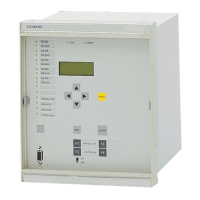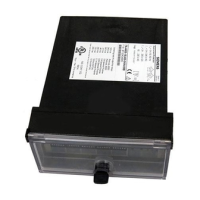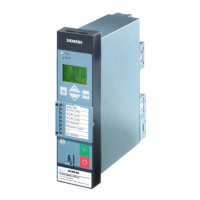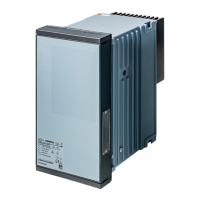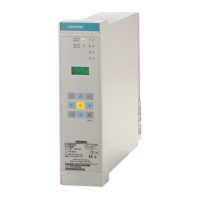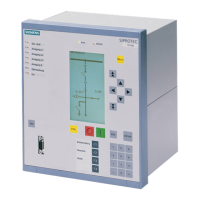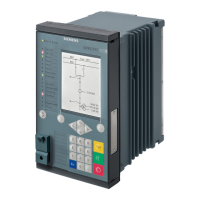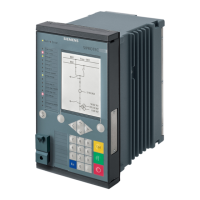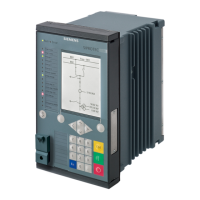Functions
108
7SS52 V4 Manual
C53000-G1176-C182-1
K
b
= I
scc max
/ I
sat
The saturation current I
sat
can be calculated from the rated current I
pn
and the ef-
fective factor of the symmetrical rated short-circuit current K'
ssc
(which used to be
called operational overcurrent factor n')
I
sat
= I
pn
* K'
ssc
I
pn
= primary rated current
The factor K'
ssc
can be calculated from the data and the actual burden of the current
transformers:
K'
ssc
= (R
ct
+R
b
) / (R
ct
+R'
b
) * K
ssc
with R'
b
= R
l
+ R
relay
R
ct
= secondary winding resistance (75 °C)
R
b
= resistive rated burden
R'
b
= connected burden
R
l
= line resistance
R
relay
= protection burden
K'
ssc
= factor of the symmetrical rated short-circuit current
For burden factors K
b
< 2, a k-factor of 0.6 is sufficient. For K
b
> 2, the minimum
k-factor is:
with K
b
> 2
The setting value k thus obtained comprises 20 % safety.
The basis for this fomula is summarized in the Chapter A.2, page 333.
The CT with the highest burden factor K
b
must be the basis for selecting the
factor k.
Id> BZ The parameter Id> BZ (6102/CU) is used to set the threshold for the bus zone-se-
lective protection in the presence of small fault current.
For pickup and tripping of the protection, only those normalized currents I
d
are consid-
ered which exceed the diff-current threshold set in the parameter Id> BZ (6102/CU).
A current below this threshold causes the pickup to drop off.
To calculate the highest permissible setting, determine first the smallest fault current
to be expected in case of a busbar short-circuit. The set value should have an extra
response margin of about 20%. The lowest permitted setting is I
max load
+ 30%.
1.3 I
max load
< Id> BZ < 0.8 I
scc min
k
K
b
4Kb 1–
-----------------------
>
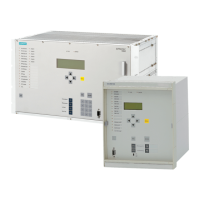
